One of the questions we get most frequently from composting beginners is whether or not they should be covering their compost piles.
Before you decide to cover or not to cover your compost pile, you have to take into account different factors. These factors include the climate in your region, the composting system you have in place, and the natural environment around you.
Certain compost systems are built with optimal airflow and have covers that protect your compost against heavy rain (or snow), critters, and keep your compost warm in the winter. However, that doesn’t mean covering your compost is always a good idea, especially in scorching environments.
Let’s look at the major reasons why you should cover your compost pile, and also the reasons why you might choose not to cover your compost pile.
When should a compost pile be covered?
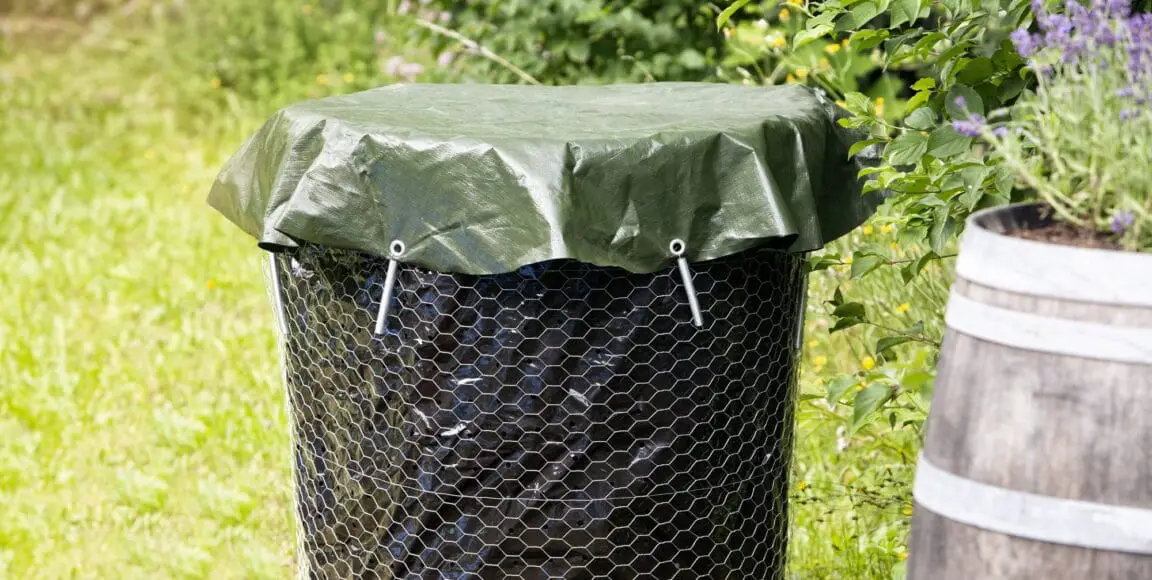
Covering your compost pile is not essential to create compost. In fact, in a lot of cases having a cover will not impact how the compost is broken down.
To break down compost, you need four ingredients: air, water, carbon, and nitrogen.
If one of these ingredients is lacking – the decomposition of the organic matter may slow down, halt, or even ruin the compost altogether. Not to mention the fact that excessive amounts of one particular ingredient may also negatively affect the compost.
With that in mind, here are some of the reasons why you may want cover your compost.
Protect your pile from too much rain
If you live in a rainy region or are enduring a rainy season, covering the compost pile can prevent the compost from getting waterlogged.
Ideally, compost materials should be between 40 and 60 percent water. If the compost pile gets overly wet, the water will fill the pore space needed for air movement, which will result in the bacteria perishing from lack of oxygen.
Bacteria are responsible for decomposing organic waste so that good quality compost can be created. Without bacteria, that task is impossible.
For that reason, using a cover to protect your compost pile from the heavy rain is certainly the best thing you can do to protect bacteria. Also, always cover finished compost. Otherwise, if continually exposed to the rain, the compost will break down further and lose its precious nutrients to the surrounding soil.
Keep wild animals away from your pile
A big part of a healthy compost pile is food waste, so many people wonder if having food scraps collected in their compost pile outside their home may attract animals.
People are particularly concerned about wild animals. People fear that these animals will look at their yard as a home base due to the food waste.

However, that’s not something you should worry about, especially if you compost properly. Generally, animals are drawn to stinky smell. Properly managed piles have an earthy aroma that is no different than a pile of leaves, which is something that animals are not attracted to.
A compost pile that smells is often one that needs more air or more carbon, so that’s something to consider before you cover it.
Keep your compost pile warm (when it’s cold)
Winter composting is like summer composting but in slow motion – the decomposing process is stalled by the cold and the food scraps may even freeze.
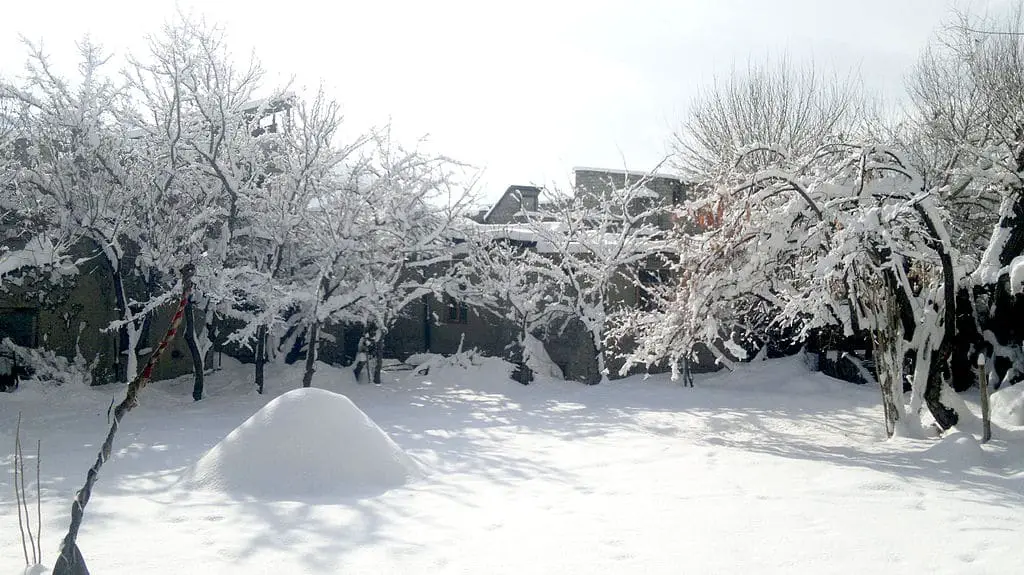
But even though you can’t control the temperature, there’s still something you can help the pile retain some of the heat to continue decomposing. First, you can always finely chop anything you add to the pile. The smaller the bits, the faster they break down.
Second, if you make a compost pile, make it as large as you can because a bigger mass of carbon and nitrogen is better at retaining heat. It’s the heat within the pile that encourages microbes (and everything else) to transform the compost.
Third, if you cover your compost pile, you can help keep the heat in and prevent the pile from getting too soggy. Finally, when you get a period where there’s warmth, do your best to turn the pile to keep the oxygen flowing. This helps aerate it and further encourage decomposition.
Bottom line: Compost should be covered, but only if you want to protect your compost from heavy rainfall and animals, or to help retain some temperature within the compost when in colder climates.
What covers should be used?
Using a tarp as a cover for a DIY compost pile is a rather popular choice, but it’s not something I’d use personally. Still, even though it’s not my personal favorite, I hear of many composting geeks using a tarp (like this one on Amazon) and having success.
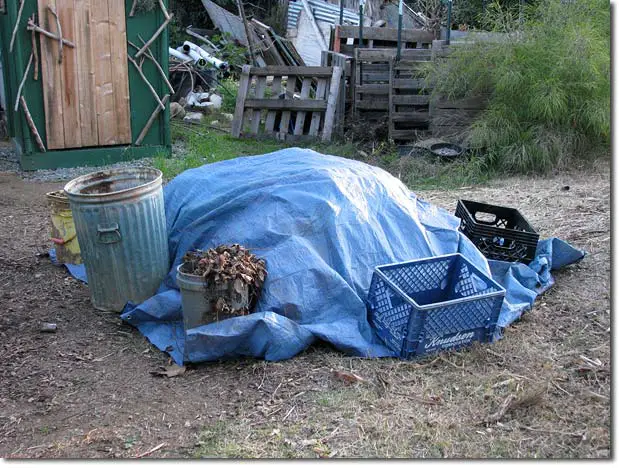
I believe that it’s a kind of a situational scenario where it depends on the content and moisture level of the pile. Sometimes trapping compost under a tarp may suffocate the pile and cause it to be a stinky, smelly, anaerobic mess. This is bad because it’s that same stinky smell that attracts wild animals to your yard.
If a pile has a lot of moisture, then it needs oxygen so that the excess water can evaporate, which may be difficult if you have a tarp pressing on top. Typically, pile with excess moisture will have a lot of green mold, which you can fix by adding more browns, such as grass clippings or dry leaves because they help absorb the water.
If you live in a zone where it rains a lot, my recommendation is that you rely on a hardcover, such as a lid from a bin or a piece of plywood. These are effective at protecting the pile from the rain without smothering it and cutting off possible airways.
Naturally, another viable option is to have your compost located under an overhang or a roof of some kind, similar to what I have below, but you might want to have the compost pile connected to the soil so that worms and other beneficial life forms have access to the compost pile. But even if your composting system has a base, you can certainly introduce those lifeforms into the compost. That’s how worm bins work.
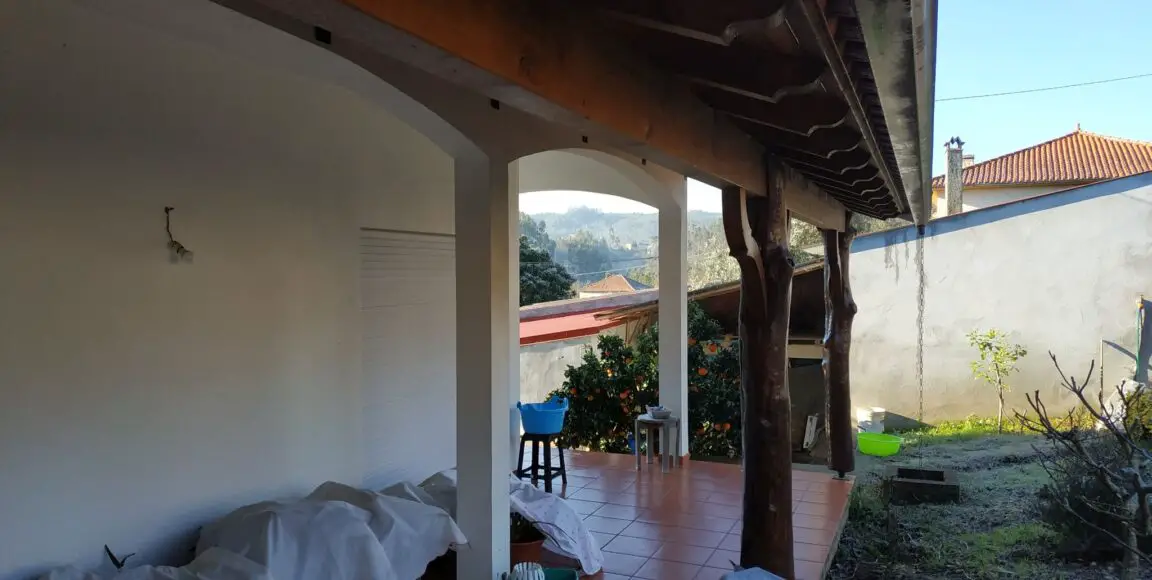
Some composting systems, like this compost tumbler (on Amazon) are also quite practical because they not only offer exceptional aeration due to the various drainage holes (often located at the side) but they also keep your compost protected from the rain, as well as wild animals. If you’re not familiar with a compost tumbler, it’s basically a container that can be rotated or turned effortlessly, without the use of a pitchfork or other tool.
These are known for being able to speed up the composting process because of how they turn the pile, perfectly mixing the organic waste with the existing microbes while at the same time infusing heat-producing oxygen that keeps the process going full steam.
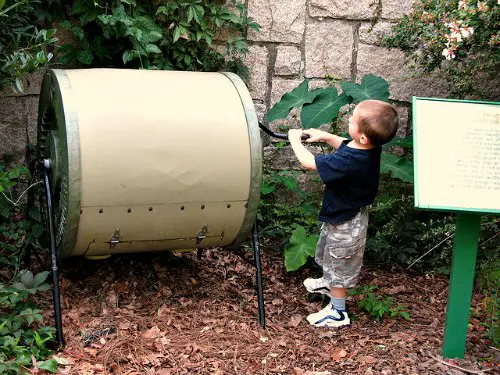
Keep in mind that you still need to apply force in order to rotate a compost tumbler, especially if you have a less sophisticated one. This means that if you have severe back, shoulder, or strength problems, you may find that turning large, full compost tumblers is a bit more than you can handle. If that’s the case, consider getting a smaller one, or one with a base that is closer to the ground, like this one on Amazon.
Compost piles are better uncovered
Generally, a compost pile shouldn’t be covered, unless the weather or wild animals are too much of an inconvenient for you.
Having an open pile allows for occasional rain and larger amounts of oxygen to work through the pile, speeding up the breakdown process.
In some cases, having the compost pile covered can lead to limited aeration, and much of the natural moisture in the pile may not dissipate swiftly, so the pile may become smelly, and in the worst of cases, the composting process may stop.
Having more air also means that you don’t have to turn the pile as often to preserve oxygen. But as we’ve seen in this article, that will depend on several factors, namely how cold and rainy your region is, and whether or not you want to fend off wild animals by blocking the smells emanating from your pile.
Related questions
1. Should my compost pile be in the sun or shade?
A compost pile (or bin) can be placed in either the sun or shade. Either way will lead to great compost as long as you have a good balance of the four essential elements: water, oxygen, carbon, and nitrogen. Placing your pile in a sunny spot may speed up the composting process, but you must first ensure that the pile is properly aerated. Strategically placing your pile in a spot where the sun is likely to strike might also be a good idea, particularly if you live in a colder environment.
We’ve mentioned this earlier, but composting in colder climates is much slower as the conditions are not optimal for the microbes to steadily breakdown the organic material, so you want to do all the little things that will help the compost retain some of its heat.
This includes placing your pile in a sunnier part of your yard, as well as use layers of leaves, straw, cardboard, or sawdust to help insulate the pile so it can remain warm.
2. Should I cover my compost pile with a dark cover?
If you live in a very cold region, it’s likely that you’ll have a hard time keeping your compost pile warm so that the decomposition of the waste can be maintained throughout. Interestingly, one of the things you can do, besides moving your compost pile to spots where the sun may shine on – is covering your compost pile with a dark tarp (or a similar material). That’s because it will attract the sun and insulate your compost much more rapidly than a lighter-colored material.
You have, however, to make sure the pile is properly aerated at the same time.
3. Should I cover my compost pile with clear plastic?
From my understanding, it might be too difficult to get enough air under clear plastic, which may result in killing the microbes. However, it may also work well in the winter when you have to amp up the temperature of the pile.
4. Should I cover my compost pile in the winter?
It’s precisely in the winter (especially if the one in your region is harsh) that you want to employ methods that insulate the compost and protect it from the elements. This essentially means that you’ll want to cover your compost pile with something that may protect it against heavy rain or snow, and keep it warm when it’s overwhelmingly cold.
Some of the links on this page may be affiliate links, meaning we receive a commission if you make a purchase through these links. You don’t pay any extra but the commissions help us provide free information on the website.
